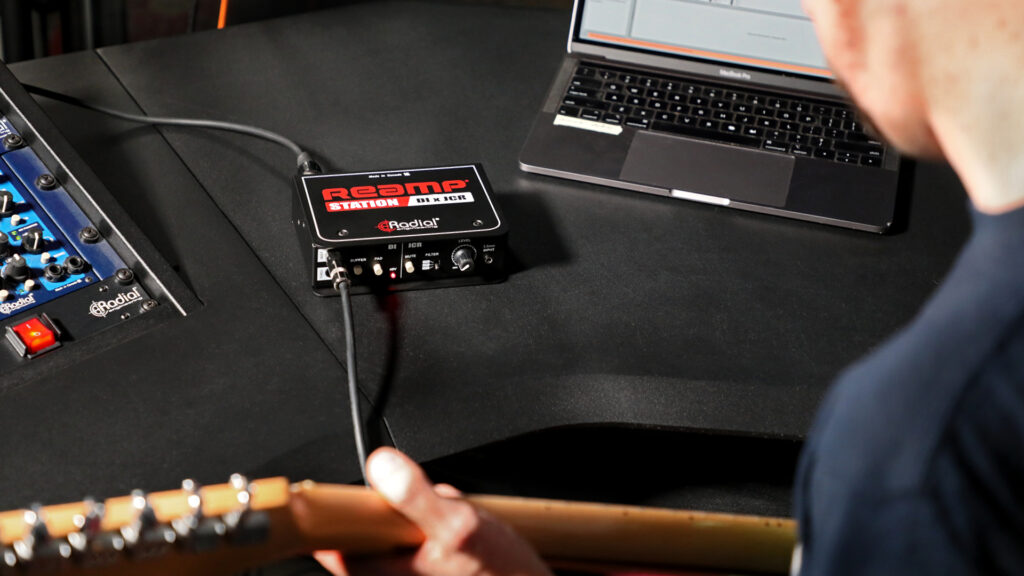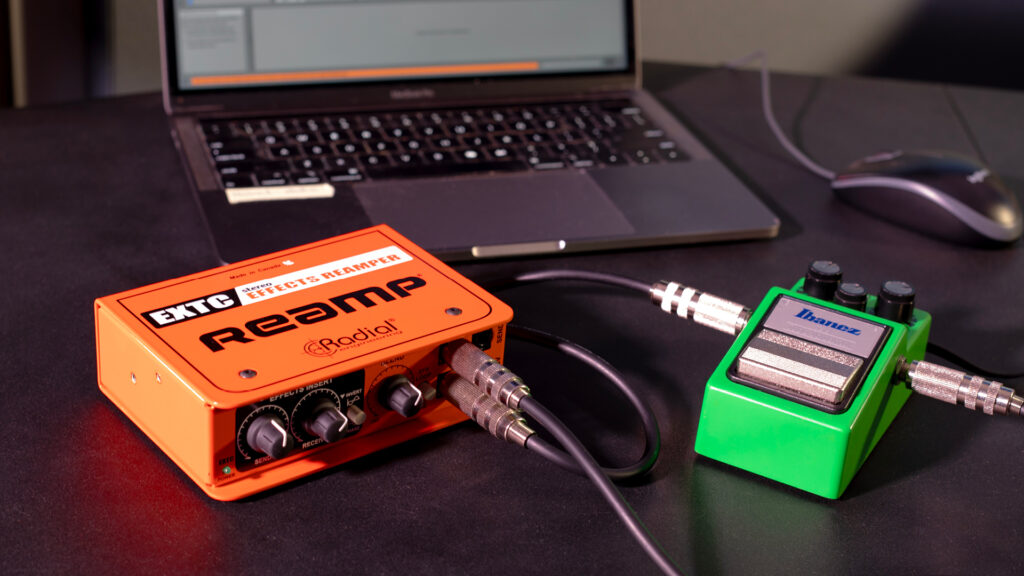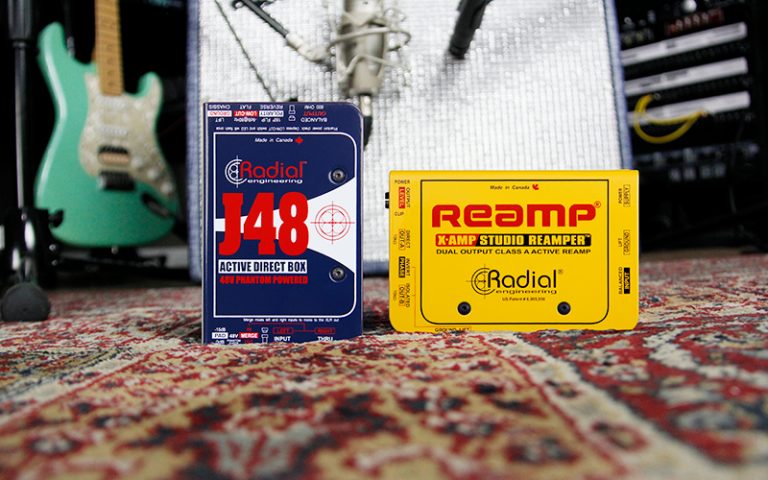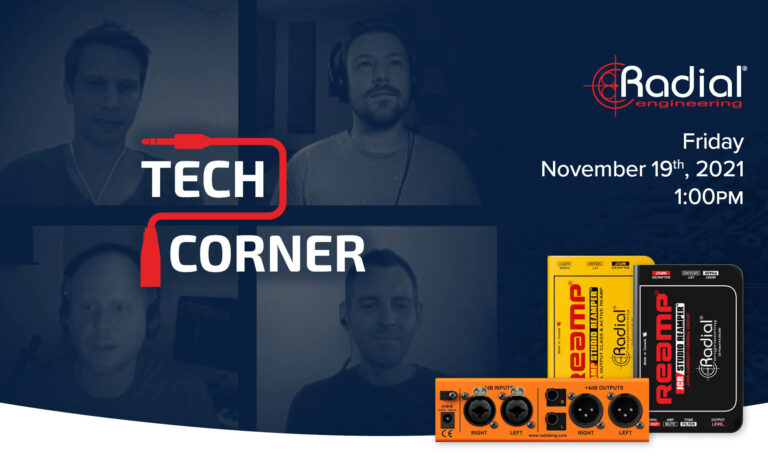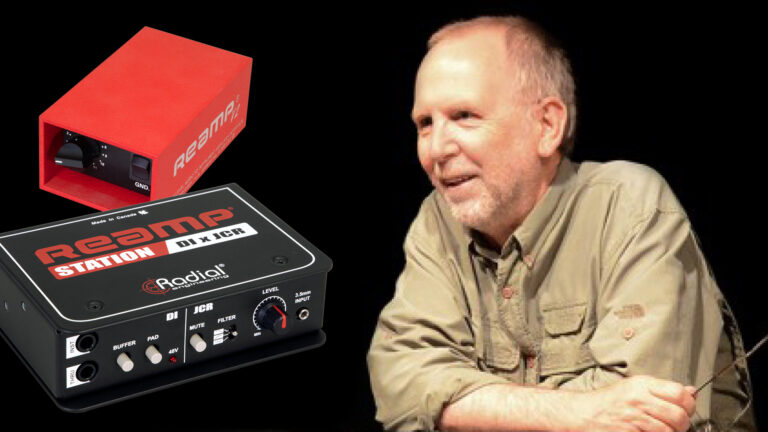What is Reamping?
Reamping is a studio recording technique that involves taking a recorded audio track (usually guitar or bass) and playing it back through a guitar amplifier, then capturing the results by recording the output of the amp to a new track. Once viewed as a ‘secret weapon’ of savvy producers and mixing engineers, Reamping has exploded in popularity due to the flexibility that it offers. After capturing the initial performance, Reamping enables the user to experiment with different amps, guitar pedals, microphone selection, and placement in order to find the perfect sound. The user can make endless tweaks during this process.
While it can seem like a complicated process, Reamping at its core requires only three straightforward steps:
- The first is to capture an unprocessed or ‘dry’ recording of your guitar or bass, which is easily achieved using a direct box that you can connect straight into an audio interface.
- The second step is where you take that recorded track and feed it into a Reamp® box, which in turn feeds your guitar pedals and amplifier.
- Finally, place a mic in front of your amp and record the results.
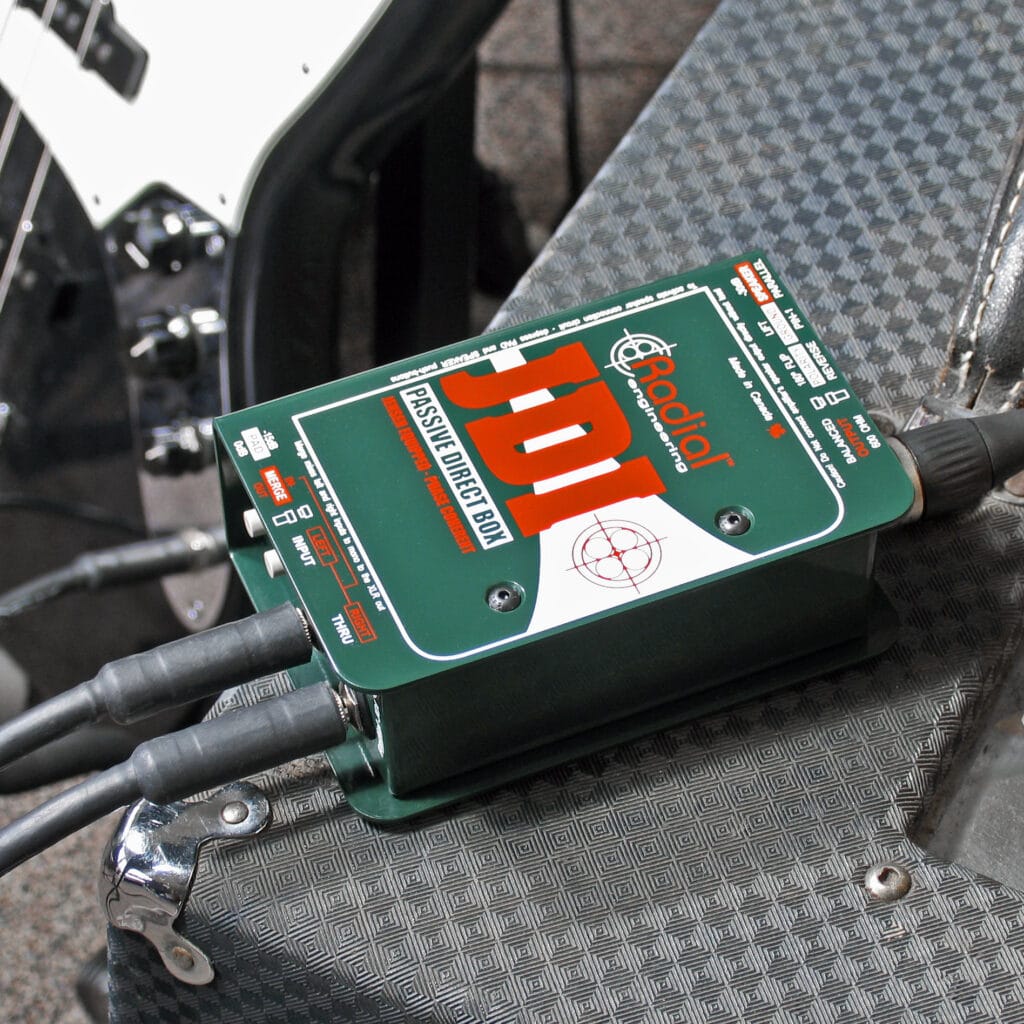
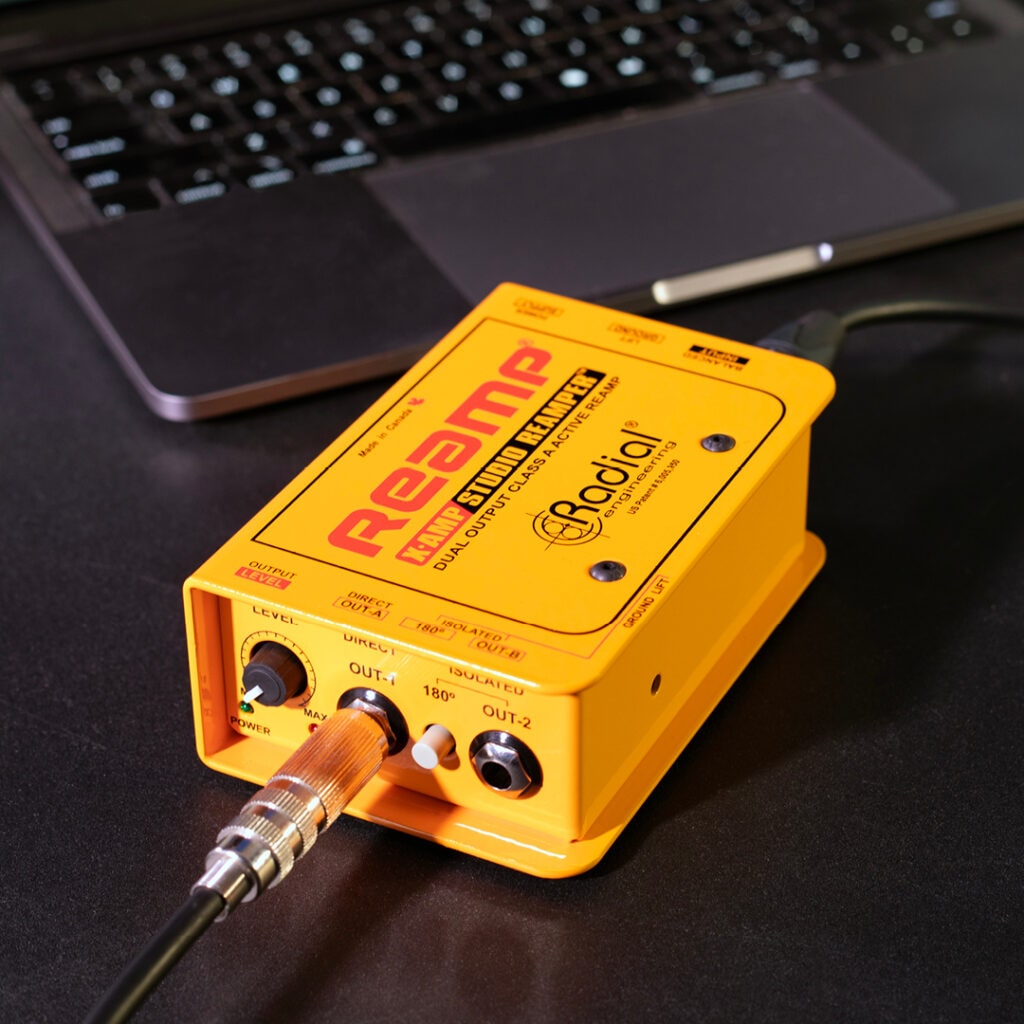
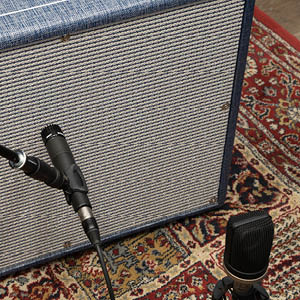
We will assume that you are familiar with the use of a DI box for recording instrument tracks in the studio, but if you would like to learn more about this topic we have plenty of resources on this topic as well. Click here for our education page explaining what a Direct Box is.
Why do I need a Reamper?
Let’s back up for a minute to that second step. You may wonder why you need a Reamp® box at all and why you can’t connect your recording equipment directly to your pedals and amplifier. Recording equipment such as mixers and audio interfaces all typically output a Line level, Low-Impedance signal. However, instruments like basses and guitars output an Instrument level, High-impedance signal. Guitar pedals and amps are designed to work their best when fed these high-impedance signals, which is why directly connecting line level gear never sounds quite right when it’s plugged in. For an excellent audio example of this, check out the the video below.
Once you’ve integrated Reamping into your mixing process you can do cool things like:
- Record your DI guitar tracks and pre-recorded material with your guitar rig.
- Patch your guitar effects pedals as outboard gear in your studio.
- And many more creative ideas and uses that we’ll touch more on later.
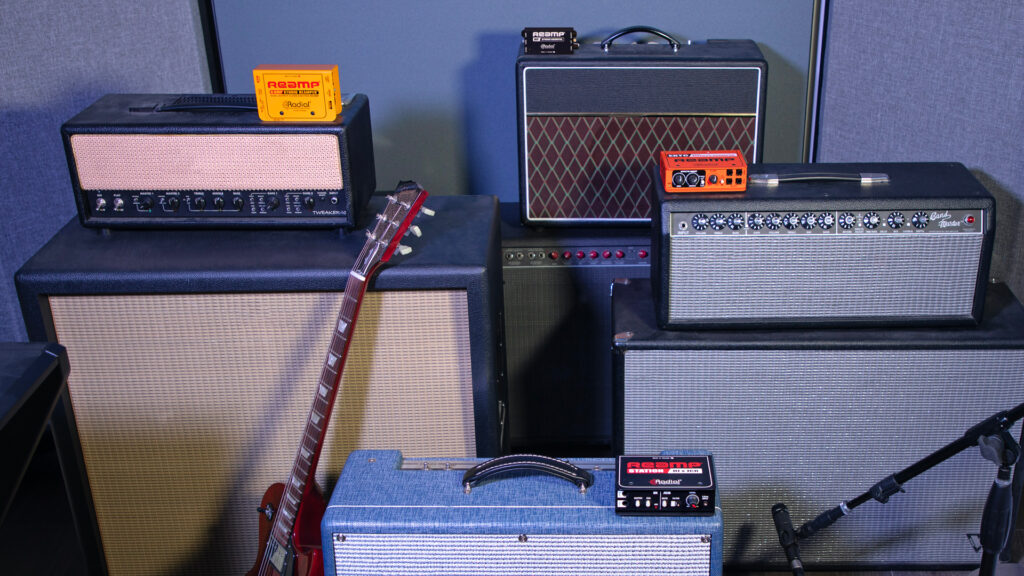
Radial has a whole selection of different Reamp® boxes for all kinds of Reamping applications but, when it comes to Reamping, the whole record now/tweak later concept is probably the most popular application of a Reamp® box.
Instead of being stuck with the guitar tone that you hastily set up on your tracking day, you can focus on capturing the perfect guitar take directly into your DAW with a DI box. You can then use a Reamp® box – at a later time – to experiment with different amp and pedal setups. This in itself gives you incredible artistic freedom as you can really dial in your songs’ perfect tone long after the guitarist has left the building.
